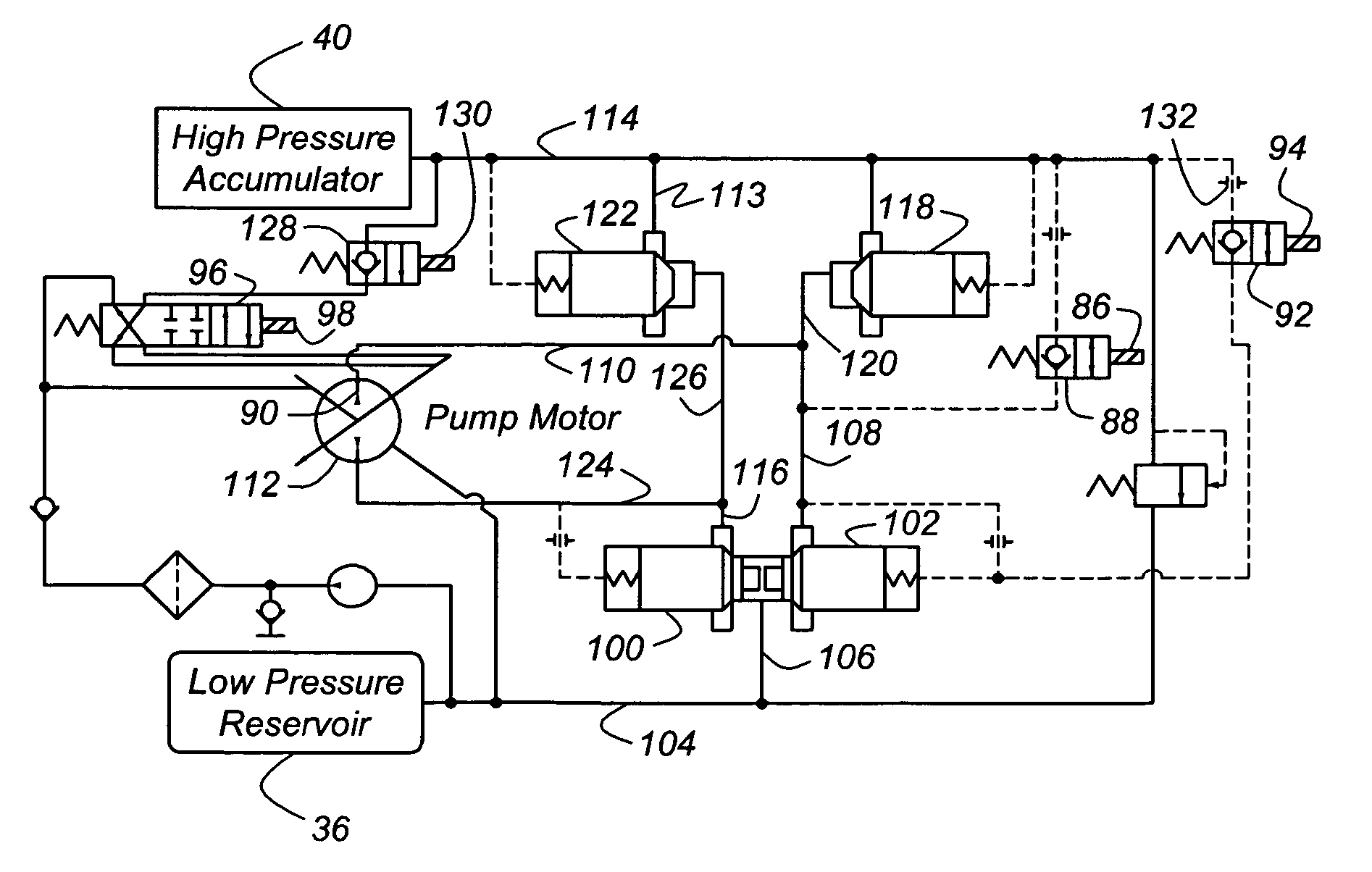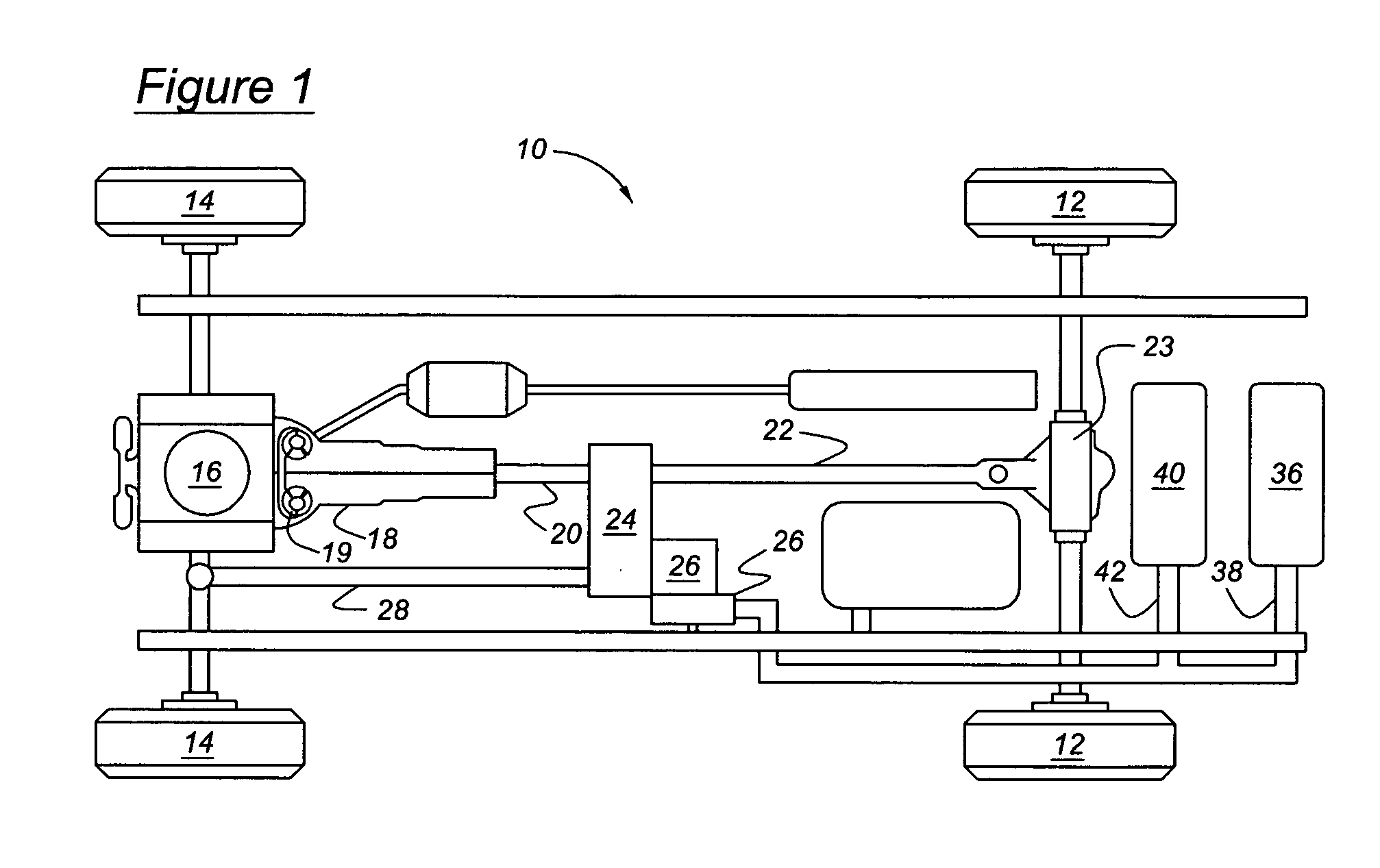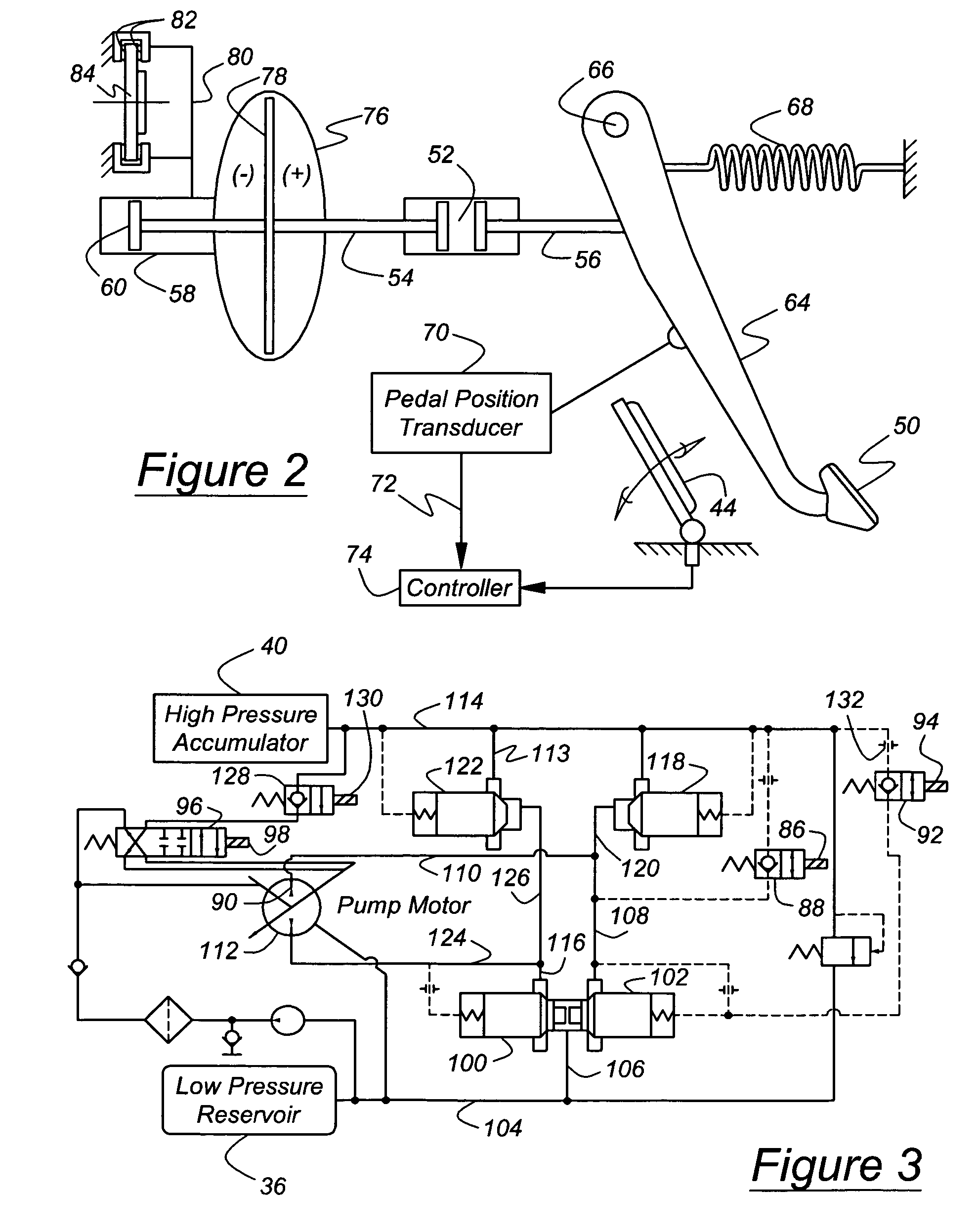Pump/motor operating mode switching control for hydraulic hybrid vehicle
a hybrid vehicle and operating mode technology, applied in hybrid vehicles, fluid couplings, free piston pumps, etc., can solve the problems of sudden vehicle movement, vibration of components, and vibration of noise shock waves toward the pump/motor, so as to prevent cavitation, damage hydraulic components, and increase the pressure in the lines and inlet ports relatively slowly
- Summary
- Abstract
- Description
- Claims
- Application Information
AI Technical Summary
Benefits of technology
Problems solved by technology
Method used
Image
Examples
Embodiment Construction
[0019] Referring now to the drawings, there is illustrated in FIG. 1 a hydraulic hybrid powertrain 10 for driving the rear wheels 12 and front wheels 14 of a motor vehicle. A power source 16, such as an internal combustion engine, is driveably connected to a transmission 18, preferably an automatic transmission that produces multiple ratios of the speed of the engine and the speed of an output shaft 20. Suitable alternative transmissions include those that are manually operated, and those that produce continuously variable speed ratios or infinitely variable speed ratios, having chain drive, belt drive or traction drive mechanisms. The transmission output shaft 20 is continually driveably connected to the rear wheels 12 through a rear driveshaft 22, rear axle shafts, and a rear differential mechanism. A transfer case 24 selectively transfers a portion of the torque carried by output shaft 20 to a front driveshaft 28, which is driveably connected to the front wheels 14 through a fron...
PUM
 Login to View More
Login to View More Abstract
Description
Claims
Application Information
 Login to View More
Login to View More - R&D
- Intellectual Property
- Life Sciences
- Materials
- Tech Scout
- Unparalleled Data Quality
- Higher Quality Content
- 60% Fewer Hallucinations
Browse by: Latest US Patents, China's latest patents, Technical Efficacy Thesaurus, Application Domain, Technology Topic, Popular Technical Reports.
© 2025 PatSnap. All rights reserved.Legal|Privacy policy|Modern Slavery Act Transparency Statement|Sitemap|About US| Contact US: help@patsnap.com



